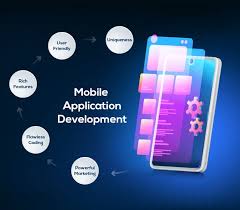Cross-platform app development has become a game-changer for businesses aiming to deliver applications across multiple operating systems with efficiency and cost-effectiveness. By leveraging a unified codebase, businesses can develop apps that work seamlessly on different platforms, such as iOS, Android, and Windows, without the need for separate development processes. Here’s an overview of the top cross-platform app development services and their key advantages.
1. Flutter
Flutter, developed by Google, is a leading framework for cross-platform app development. It enables developers to create high-performance, natively compiled applications for mobile, web, and desktop from a single codebase.
- Advantages:
- Rich UI: Flutter provides a wide range of pre-designed widgets and a customizable UI, which allows for a highly responsive and visually appealing user experience.
- Performance: Flutter’s use of Dart language and its direct compilation to native code results in near-native performance.
- Hot Reload: This feature allows developers to see changes in real time without restarting the application, significantly speeding up the development process.
2. React Native
React Native, maintained by Facebook, allows developers to build mobile apps using JavaScript and React. It is widely used for creating robust and high-performance applications across iOS and Android platforms.
- Advantages:
- Native Components: React Native bridges the gap between web and native apps by using native components, which ensures a near-native performance and user experience.
- Large Community: With a vast ecosystem and strong community support, developers have access to numerous libraries and tools that can accelerate development.
- Code Reusability: React Native’s ability to reuse code across platforms reduces development time and cost.
3. Xamarin
Xamarin, a Microsoft-owned framework, uses C# and .NET to develop cross-platform applications for iOS, Android, and Windows. It integrates seamlessly with Microsoft’s ecosystem, making it a solid choice for enterprises already using Microsoft technologies.
- Advantages:
- Single Codebase: Xamarin allows developers to write code once and deploy it across all platforms, streamlining the development process.
- Access to Native APIs: Xamarin provides access to native APIs and features, enabling high-performance and feature-rich applications.
- Integration with Microsoft Tools: It integrates well with Microsoft tools such as Visual Studio, enhancing productivity for developers working within the Microsoft environment.
4. Ionic
Ionic is a popular framework for building hybrid mobile apps using web technologies like HTML, CSS, and JavaScript. It focuses on creating a native-like experience for users through a single codebase that works across different platforms.
- Advantages:
- Web Technologies: Ionic’s use of familiar web technologies allows developers to leverage their existing skills and tools.
- UI Components: The framework offers a wide range of pre-built UI components that mimic native elements, providing a consistent and engaging user experience.
- Extensibility: Ionic supports integration with other frameworks and libraries, such as Angular and React, allowing for flexible development options.
5. PhoneGap/Cordova
PhoneGap, also known as Apache Cordova, is a framework that allows developers to build mobile apps using HTML, CSS, and JavaScript. It provides a way to package web applications into native containers for distribution on app stores.
- Advantages:
- Cross-Platform Compatibility: PhoneGap/Cordova enables the development of applications for multiple platforms from a single codebase.
- Plugins: The framework supports a range of plugins that provide access to native device features, enhancing app functionality.
- Open Source: Being open-source, it offers flexibility and cost savings, along with a broad community for support and resources.
Conclusion
Top cross-platform app development services, including Flutter, React Native, Xamarin, Ionic, and PhoneGap/Cordova, offer businesses a variety of tools to build high-quality applications efficiently and cost-effectively. Each framework has its unique advantages, from performance and UI capabilities to integration with existing ecosystems and development tools. By choosing the right service based on specific project needs and goals, businesses can create versatile and engaging apps that reach a wide audience across multiple platforms.



